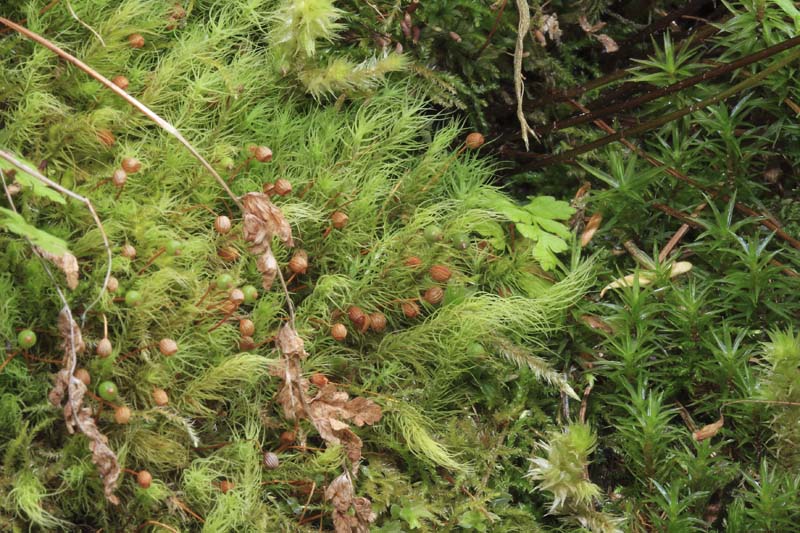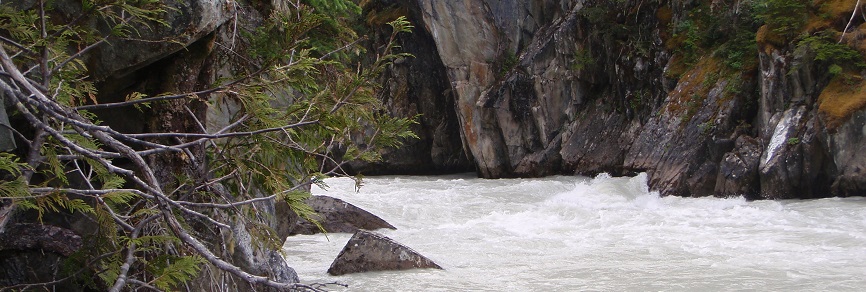
Haller’s apple moss
Jasper National Park
Quick facts
Found around the world (Europe, Asia, Australia, New Zealand, New Guinea), but in North America only found in a small part of the Canadian Rockies
Canadian numbers about 1 100 individuals recorded across 15 sites
Size 4 - 13 centimetres tall
Reproduces with spores
Lifespan, growth rate, generation time all unknown
SARA Status: Threatened (2003)

Haller’s apple moss (Bartramia halleriana) is named for the tiny apple-shaped capsules which hold its spores. A spore is a reproductive cell that develops into new moss. Unlike many other plants, mosses do not make seeds to reproduce.This moss is rare and scientists still have a lot to learn about it.
Mosses do not have roots, rather they take in water by soaking it up like a sponge. This means they must live in places that are always wet or the air is moist.
Where colonies live
Haller’s apple moss lives on shady cliff ledges and rocky mountain slopes. This moss is known to grow only in a moist, cool microclimate at elevations between 600 and 1 600 meters.
This mysterious plant can be found around the world, but in all of North America, they seem to be limited to 15 sites in a small area of the Canadian Rockies. Two of these sites are located in Jasper National Park.
Haller’s apple moss grows in moist and cool conditions, often on cliffs above rivers and near waterfalls.
Why they are at risk
The specific threats to Haller’s apple moss are not well understood. The moss may be so rare due to its very specific habitat requirements. It is also at risk because it is found in such small numbers and few locations.
Plant physiology
There are some questions about how well the moss can distribute spores, since there are many seemingly appropriate sites within the distribution area where they are not present. This may be related to the short spore capsule stalks; similar moss species have spore capsules raised high above the leaves.
Wildfire and forest disturbance
A mountain pine beetle outbreak has killed large areas of pine forest in Jasper National Park. Dead trees do not retain water. This could increase the temperature of the moss’s ecosystem and reduce its ability to retain moisture.
The risk of wildfire is low at most sites, but threatens the two sites in Jasper National Park. Because these sites are close to one another, a single fire could destroy the two colonies.
Recreation
Most Haller’s apple moss sites are in places that are difficult to reach. Some of the populations in Jasper are located close to trails. All mosses are susceptible to trampling; stay on trails and watch where you step!
Human development
There are several locations outside of protected areas that are threatened by proposed hydroelectric developments, logging, transmission lines, roads and pipelines.
How we are helping
Monitoring
Field surveys conducted by Parks Canada have helped to identify previously unrecorded sites of Haller’s apple moss, and confirmed its presence in known sites.
Haller’s apple moss recovery team
Parks Canada is the lead on this recovery team, working in cooperation with the University of Alberta, Alberta and British Columbia provincial governments, and Environment Canada to develop recovery strategies.
Protecting habitat
We protect populations by ensuring projects like road improvements and utility upgrades do not remove trees near moss populations because this could affect the cool and moist microclimate at the site. We are also working on a wildfire response plan for these populations.

Sensor to measure relative humidity and temperature at a colony.
- Date modified :